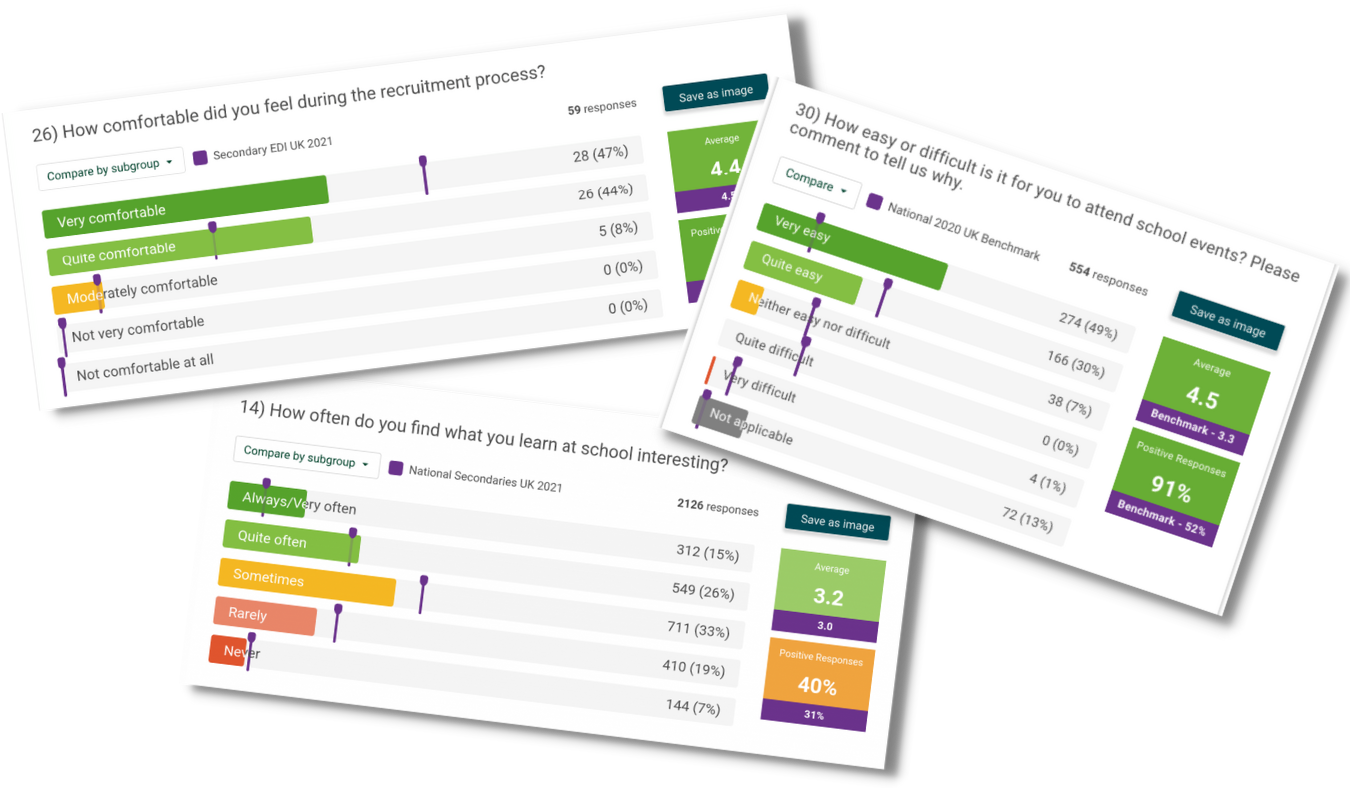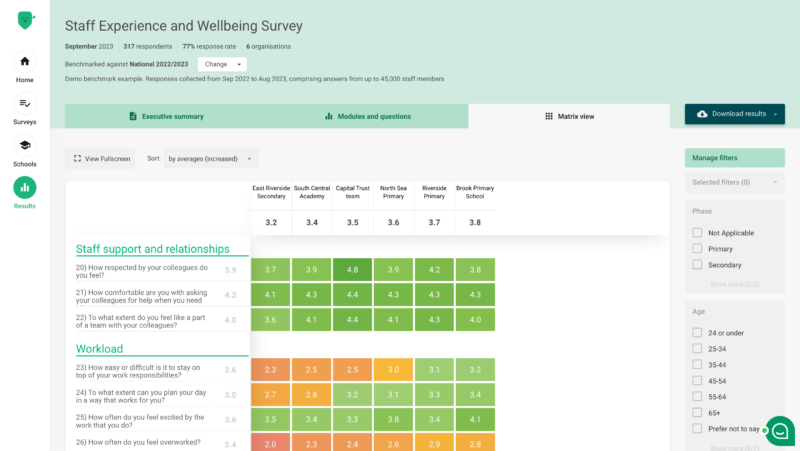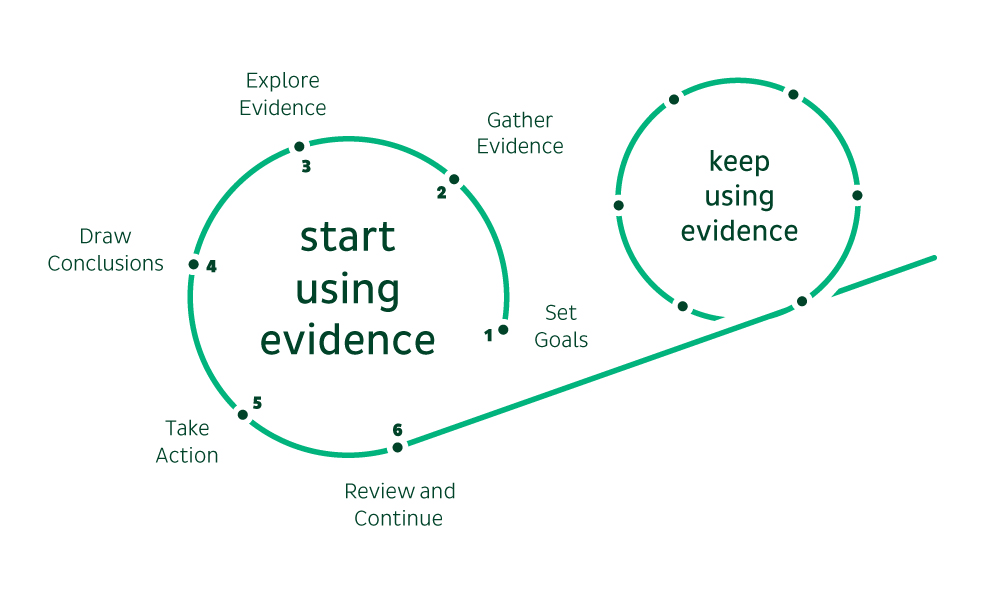
Engage, Enrich, Excel Academies Trust (EEEA)
Engage, Enrich, Excel Academies Trust (EEEA) is a 6-school trust located across the south of England.
How did you decide to work with Edurio?

We had been using another company to do the surveys for about three years before we chose to work with Edurio. Returning to the same survey provider over multiple years was useful as we could see year on year comparisons for the trust, but we didn’t get any comparisons beyond our own organisation.
Without that external comparison, we could look at the results and feel that we were doing well or badly in a particular area, but without an external comparison, it was hard to know whether the results we were seeing were actually how they appeared to be.
So when Edurio was recommended to us, and we learned about their nationally benchmarked set of questions, we felt this would be really valuable to us. That was the main reason we made the switch from our previous provider to Edurio.

The other challenge with what we had been using previously was that those surveys had a lot more questions, so the important areas got lost in amongst all the other questions. So even though we’d been using that survey for about three years, we felt it was time to review other options in the sector, and that’s where we found Edurio.
Lastly, the fact that it was genuinely anonymous and that Edurio is an independent company was a key factor in our decision. With the previous survey, you were given a code where you would log in, but we didn’t know how many times people logged in. With Edurio, we were confident we could reach all our members of staff and provide them an anonymous opportunity for feedback.
How did you find the process of working with Edurio?
This is our third year working with Edurio on a staff survey, and the process has been straightforward each time. In our first year we learned how the system works, made sure that the emails that we shared with Edurio were accurate and that the Edurio surveys wouldn’t land in people’s junk boxes. We also found out after we launched that one of our schools had done a staff survey a month before we did the overall trust survey, and so their return rate was really low. So we learnt from that.
The honest guidance from the Edurio team was really useful, around what would or would not work, how many questions we should include, and timing for the surveys early on. Edurio’s Customer Success Manager, Mikelis, worked with us throughout the survey and the support was key because he helped us work through whether we wanted to include bespoke questions, and guided us on best practice based on the research sitting behind the Edurio surveys. They’re not just questions picked out of the air, they’re questions that have been informed from work they’ve done over the years. Most of our bespoke questions we’ve actually taken out now because we see more value from Edurio’s set questions.

Mikelis has also been really helpful in that he will touch base frequently throughout the time we’ve been working together. Even when we haven’t had a survey coming up, he’ll reach out and see how we’re getting on with the results and see if there’s anything he can do to help, there’s been no issue that wasn’t able to be resolved. The Edurio team is always happy to help, joining meetings with our trustees and so on to come and present the data in a way that the team have always found really valuable.
And the platform itself is really useful. With Edurio you also have access to all your questions in a way you can drill down deeper and combine different sets of data. It’s really clear. I think the colours help you to see where you are strong and where you might need some more attention. It’s really easy to play around with for myself, my school heads and my trustees.

From a data perspective, one of the things that we were really keen on this year was to increase the participation in the survey. So we talked about making sure there’s no surveys running in the school at the same time, giving the schools quite a bit of warning that it was coming and I set a target for the response rate of 70% to introduce a bit of competition. We got a really good response rate this year as a result. And with Edurio’s system, it can tell whether a staff member has filled out the survey and send reminders to those who haven’t (without bothering those who have), which really helps to ensure we’re reaching everyone.
What has been the impact on EEEA of using Edurio?
We run the survey in the Spring term, so once we’ve got the results we can analyse what the reports say, and then communicate to the staff what we’re going to do and what we’re going to change going into the new year. We’ll look at what the priority areas should be: what were the strengths and what are the next areas we want to focus on and this forms the basis of our action plan. As an example, we had feedback a year ago around communication from the Trust and the appraisal process. As a result of both of those, we changed the way that we communicate with staff and changed our appraisal process, and found that this year, the feedback was much more positive.
One of things that’s been really interesting for us is that, depending on where we assess the schools on their journey of development, we can see certain indicators within the surveys. We had a school that’s undergone a lot of change over the past three years, and is now in a good, stable position. Watching their survey results over the past three years we could see that transition from initial indicators of a lot of work going on, to now seeing really positive results. And we’re now able to use that information for another school that’s going through a similar journey. So we’ve been able to look at it a bit more strategically, and also use it with governors and trustees to outline the process that we know we go through. Comparing that school’s current situation to the other school’s situation from a few years ago we see very similar data, so we can start to see what tools we deployed in the original school that might help us guide this school through their journey.

Our staff have been really receptive to the surveys too, they’re really open because it’s part of our culture. We don’t tell people what to do, what we do is influence thinking and question things. And I involve the heads in the discussions before we start the planning process so they know that it’s a key part of role as leaders, to capture stakeholder understanding and wellbeing.
The process is very much a cyclical one. People will respond to surveys if they feel they’re going to get something out of it. We say to them “this is what you told us and as a result, these are the changes we plan to make, and you can contact me directly if you want to have a conversation about thoughts and ideas”. So for me, it’s just a key part of how we work now.
And last but not least, the surveys come in handy when we have an inspection, as we’re able to show the areas of success and show that whilst we are not without challenges, we are aware of them and able to take proactive and evidence-driven steps towards improving them.
Why would you recommend Edurio?
Whenever I do any school improvement work with other trusts, I’m recommending Edurio to everybody as a way of capturing anonymous feedback via a group of independent experts. I’ve had feedback in some schools where they’ve been gathering anecdotes here and there but don’t have the complete picture by any stretch. As this company is completely independent and you’re able to reach all your stakeholders, you’ll be able to use it as a really good piece of evidence to either support what you’re saying or look at development points.
And it’s cost-effective. I think too many schools choose to do surveys on the cheap, using Survey Monkey, Google surveys, but the biggest challenge they have if they’re going through difficult times is it can be so subjective, and it’s hard to ensure it’s anonymous. And you know, where’s the theory? What’s the research sitting behind your survey?
Finally, because the platform is really easy to use, easy to understand, you can really dive deeply into it, to prioritise what matters most, communicate that back to your teams, and then see how things change next year based on the efforts you put in this year.
Want to learn more about how we work with schools and multi-academy trusts? We would love to hear about your school improvement goals and see how we could help — you can also send us an email at hello@edurio.com.
